Podcast: Play in new window | Download
Subscribe: Apple Podcasts | RSS
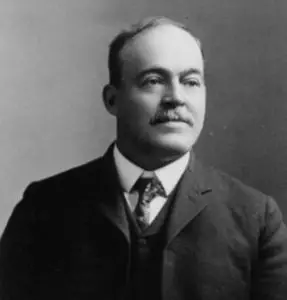 In 1894 American consul to the Yucatán, Edward H. Thompson, purchased the abandoned plantation called Hacienda Chichén some 70 miles east of the peninsula’s capital of Mérida. The property, one of the oldest haciendas in the Yucatán, had been a casualty of the region’s Caste War and had been deserted in 1847. The crumbling hacienda house and formerly productive lands aside, Thompson bought the property because it contained the ruins of one of the most visited archaeological sites in the world, Chichén Itzá. Foreign researchers and curiosity seekers had conducted excavations at the site off and on throughout the 1800s, but it was Thompson exclusively who explored, excavated, mapped and cleared the site during his ownership. Besides the iconic Pyramid of Kukulcán, and other structures such as the ball court, the Observatory and the Temple of a Thousand Warriors, Thompson was interested in Chichén Itzá’s Sacred Cenote. The cenote was and is a large natural pit with exposed groundwater measuring some 200 feet across. The American had heard legends from the locals about the significance of this gigantic sacred well, and in 1904 Thompson brought in machinery to dredge it. The Sacred Cenote yielded many artifacts including items made of gold and copper, jade pieces, intact pottery figurines, human remains, copper bells and fragments of stone and shell objects. The water preserved items of wood including weapons, jewelry, scepters, idols and tools. The cenote also preserved textiles, the study of which has proved to be invaluable. In 1909 Thompson hired Greek divers from the Bahamas to explore the bottom of the cenote close up. Thompson himself even happily proclaimed in his personal diaries that, “I have at last personally trod the bottom of the Cenote.” By 1923 Edward H. Thompson was finished dredging the cenote and thousands of artifacts from this massive sacred well were shipped off to the United States. Most of these precious items ended up in the Peabody Museum at Harvard University in Massachusetts. In 1926, the Mexican government seized Thompson’s property, including the hacienda house and various buildings he had refurbished, and all the ruins included in his original land deed. The official reason for the seizure according to the authorities was that Thompson had illegally removed artifacts discovered on his property and that he was trafficking in antiquities. The American protested and the case ground through the Mexican court system until a decision was reached in Thompson’s favor at the Mexican Supreme Court in 1944. As Thompson had died in 1935 – 9 years before the ruling – the Hacienda Chichén passed to his heirs. The Thompson family promptly sold the property to Mexican tourism entrepreneur Fernando Barbachano Peon. No one knows just how many artifacts were pulled out of the cenote at Chichén Itzá, or where exactly some of the pieces ended up. While many pieces were sent to the Peabody, there was also an untold number of valuable artifacts that were taken away by workers and other locals and sold on the open market to collectors. There were two more major artifact retrieval projects conducted at the Sacred Cenote in the 1960s but what they found were mere table scraps left over from the explorations made by Thompson in the early part of the century. This gigantic well at Chichén Itzá is not the only such formation in the Maya world used for sacred purposes. Researchers believe that there are some 6,000 cenotes in the Yucatán, and many have yet to be explored.
In 1894 American consul to the Yucatán, Edward H. Thompson, purchased the abandoned plantation called Hacienda Chichén some 70 miles east of the peninsula’s capital of Mérida. The property, one of the oldest haciendas in the Yucatán, had been a casualty of the region’s Caste War and had been deserted in 1847. The crumbling hacienda house and formerly productive lands aside, Thompson bought the property because it contained the ruins of one of the most visited archaeological sites in the world, Chichén Itzá. Foreign researchers and curiosity seekers had conducted excavations at the site off and on throughout the 1800s, but it was Thompson exclusively who explored, excavated, mapped and cleared the site during his ownership. Besides the iconic Pyramid of Kukulcán, and other structures such as the ball court, the Observatory and the Temple of a Thousand Warriors, Thompson was interested in Chichén Itzá’s Sacred Cenote. The cenote was and is a large natural pit with exposed groundwater measuring some 200 feet across. The American had heard legends from the locals about the significance of this gigantic sacred well, and in 1904 Thompson brought in machinery to dredge it. The Sacred Cenote yielded many artifacts including items made of gold and copper, jade pieces, intact pottery figurines, human remains, copper bells and fragments of stone and shell objects. The water preserved items of wood including weapons, jewelry, scepters, idols and tools. The cenote also preserved textiles, the study of which has proved to be invaluable. In 1909 Thompson hired Greek divers from the Bahamas to explore the bottom of the cenote close up. Thompson himself even happily proclaimed in his personal diaries that, “I have at last personally trod the bottom of the Cenote.” By 1923 Edward H. Thompson was finished dredging the cenote and thousands of artifacts from this massive sacred well were shipped off to the United States. Most of these precious items ended up in the Peabody Museum at Harvard University in Massachusetts. In 1926, the Mexican government seized Thompson’s property, including the hacienda house and various buildings he had refurbished, and all the ruins included in his original land deed. The official reason for the seizure according to the authorities was that Thompson had illegally removed artifacts discovered on his property and that he was trafficking in antiquities. The American protested and the case ground through the Mexican court system until a decision was reached in Thompson’s favor at the Mexican Supreme Court in 1944. As Thompson had died in 1935 – 9 years before the ruling – the Hacienda Chichén passed to his heirs. The Thompson family promptly sold the property to Mexican tourism entrepreneur Fernando Barbachano Peon. No one knows just how many artifacts were pulled out of the cenote at Chichén Itzá, or where exactly some of the pieces ended up. While many pieces were sent to the Peabody, there was also an untold number of valuable artifacts that were taken away by workers and other locals and sold on the open market to collectors. There were two more major artifact retrieval projects conducted at the Sacred Cenote in the 1960s but what they found were mere table scraps left over from the explorations made by Thompson in the early part of the century. This gigantic well at Chichén Itzá is not the only such formation in the Maya world used for sacred purposes. Researchers believe that there are some 6,000 cenotes in the Yucatán, and many have yet to be explored.
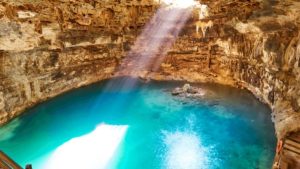 As mentioned earlier, a cenote is another name for a large sinkhole with exposed sub-surface water. The name “cenote” comes from the Yucatec Maya word ts’onot which refers to any location with easily accessible groundwater. In Mexico almost all such sinkholes exist in the northern Yucatán Peninsula with some exceptions in Tamaulipas. Here is what Wikipedia has to say about cenotes:
As mentioned earlier, a cenote is another name for a large sinkhole with exposed sub-surface water. The name “cenote” comes from the Yucatec Maya word ts’onot which refers to any location with easily accessible groundwater. In Mexico almost all such sinkholes exist in the northern Yucatán Peninsula with some exceptions in Tamaulipas. Here is what Wikipedia has to say about cenotes:
“Cenotes are formed by dissolution of rock and the resulting subsurface void, which may or may not be linked to an active cave system, and the subsequent structural collapse. Rock that falls into the water below is slowly removed by further dissolution, creating space for more collapse blocks. It is likely that the rate of collapse increases during periods when the water table is below the ceiling of the void, since the rock ceiling is no longer buoyantly supported by the water in the void. Cenotes may be fully collapsed creating an open water pool, or partially collapsed with some portion of a rock overhanging above the water. The stereotypical cenotes often resemble small circular ponds, measuring some tens of meters in diameter with sheer rock walls. Most cenotes, however, require some degree of stooping or crawling to access the water.”
The limestone composition of the northern Yucatán makes for a pock-marked landscape full of cenotes, as well as many underground caves. Out of the estimated 6,000 cenotes in the area, only a fraction has been explored thoroughly. Many are completely unknown and lay hidden in the jungle.
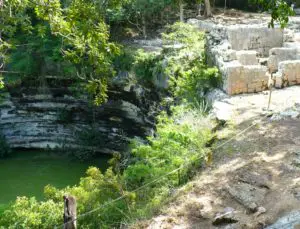 The underground freshwater mass making up the Yucatán’s aquifer is part of what geologists call an anchialine system. The cenotes and the aquifer itself are landlocked but are connected to the ocean. The fresh water of the water table eventually blends with salt water near the seacoasts. Some cenotes may have interesting combinations of salt water and freshwater aquatic life as a result of this blending. Mollies, guppies, catfish, tilapia, eels and frogs live in the cenotes. A few of the underground cave systems provide visible physical access to the sea and a few networks have been measured to go on for hundreds of miles. As mentioned previously, most of this extensive cenote and underground cave system – wet or dry – has yet to be thoroughly explored.
The underground freshwater mass making up the Yucatán’s aquifer is part of what geologists call an anchialine system. The cenotes and the aquifer itself are landlocked but are connected to the ocean. The fresh water of the water table eventually blends with salt water near the seacoasts. Some cenotes may have interesting combinations of salt water and freshwater aquatic life as a result of this blending. Mollies, guppies, catfish, tilapia, eels and frogs live in the cenotes. A few of the underground cave systems provide visible physical access to the sea and a few networks have been measured to go on for hundreds of miles. As mentioned previously, most of this extensive cenote and underground cave system – wet or dry – has yet to be thoroughly explored.
In the year 1936, in its publication titled, Physical and Chemical Survey of Cenotes of Yucatán, the Carnegie Institution in Washington DC came up with a classification system for cenotes that is still in use today. There are 4 different kinds of cenotes:
- Jug or Pit Cenotes: These are cenotes that have a narrow surface connection which opens up to a fatter water body beneath the ground.
- Cylinder Cenotes: These cenotes are those with vertical walls.
- Basin Cenotes: This type has a shallow water basin.
- Cave Cenotes or Grutas: These have horizontal entrances and have dry sections.
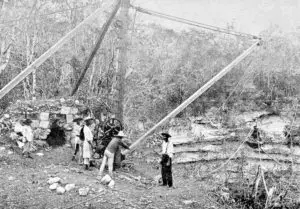 Besides the occasional gathering of rainwater, the cenotes of the northern Yucatán served as the only fresh water source for the ancient Maya as the area has no running streams or rivers. Any rain falling in the area leeches into the limestone earth and makes its way to the water table. As they served as direct access to the aquifer, the open-air pits provided an inexhaustible and dependable water supply. Without the cenotes there would have been no Maya civilization, at least in the north. Because of the importance of these gigantic wells, many cenotes, if not all of them, were ascribed at least some ritual significance. The Sacred Cenote of Chichén Itzá described earlier is the most famous example of a cenote used for practical and ritual reasons. Archaeologists believe that a “cenote cult” arose at Chichén Itzá and this is based on the thousands of items dredged from the Sacred Cenote. Most of the artifacts found in the gigantic well date to after 1000 AD from the time when the city became revitalized by central Mexican influence after the Classic Maya collapse. When the Spanish arrived in the 1500s people were still tossing things into the Sacred Cenote. A few friars wrote about how “virgins” were sacrificed in the gigantic well. The story of virgin sacrifice still captures the imagination and persists to this day although the bones found there say otherwise. In a study from the early 1930s of the bones dredged from the main cenote of Chichén Itzá, of the identifiable remains thirteen are of men; twenty-one are of children ranging from infants to twelve years old, and of these, half are under six years old. Only eight are of women, and seven of those were over the age of twenty, which was considered old for marriage age among the Maya. The friars writing about virgin sacrifice were probably hearing second-hand stories or may have been embellishing to further enhance the “heathen” or “barbaric” image of the natives of the region. Some modern-day archaeologists theorize that these people were not sacrificed at all, but rather were cast into the cenote after an unfortunate death or due to tragic life circumstances. Perhaps “burial by cenote” meant an easier time in the afterlife. As the cenotes were the literal lifeblood of the Maya cities in the Yucatán, they were shown special reverence, but actual human sacrifice may not have been in order. Most certainly the chaacs, or rain gods were honored there, along with local spirits associated with water. In some instances where dry land caves serve as entrances to cenotes, some Maya still believe that aluxes live there and must be respected. An alux is a goblin-like creature or magical little person believed to live in the forests away from humans. For more information about aluxes, please see Mexico Unexplained episode number 59. https://mexicounexplained.com/alux-chaneque-mexicos-elusive-elves/
Besides the occasional gathering of rainwater, the cenotes of the northern Yucatán served as the only fresh water source for the ancient Maya as the area has no running streams or rivers. Any rain falling in the area leeches into the limestone earth and makes its way to the water table. As they served as direct access to the aquifer, the open-air pits provided an inexhaustible and dependable water supply. Without the cenotes there would have been no Maya civilization, at least in the north. Because of the importance of these gigantic wells, many cenotes, if not all of them, were ascribed at least some ritual significance. The Sacred Cenote of Chichén Itzá described earlier is the most famous example of a cenote used for practical and ritual reasons. Archaeologists believe that a “cenote cult” arose at Chichén Itzá and this is based on the thousands of items dredged from the Sacred Cenote. Most of the artifacts found in the gigantic well date to after 1000 AD from the time when the city became revitalized by central Mexican influence after the Classic Maya collapse. When the Spanish arrived in the 1500s people were still tossing things into the Sacred Cenote. A few friars wrote about how “virgins” were sacrificed in the gigantic well. The story of virgin sacrifice still captures the imagination and persists to this day although the bones found there say otherwise. In a study from the early 1930s of the bones dredged from the main cenote of Chichén Itzá, of the identifiable remains thirteen are of men; twenty-one are of children ranging from infants to twelve years old, and of these, half are under six years old. Only eight are of women, and seven of those were over the age of twenty, which was considered old for marriage age among the Maya. The friars writing about virgin sacrifice were probably hearing second-hand stories or may have been embellishing to further enhance the “heathen” or “barbaric” image of the natives of the region. Some modern-day archaeologists theorize that these people were not sacrificed at all, but rather were cast into the cenote after an unfortunate death or due to tragic life circumstances. Perhaps “burial by cenote” meant an easier time in the afterlife. As the cenotes were the literal lifeblood of the Maya cities in the Yucatán, they were shown special reverence, but actual human sacrifice may not have been in order. Most certainly the chaacs, or rain gods were honored there, along with local spirits associated with water. In some instances where dry land caves serve as entrances to cenotes, some Maya still believe that aluxes live there and must be respected. An alux is a goblin-like creature or magical little person believed to live in the forests away from humans. For more information about aluxes, please see Mexico Unexplained episode number 59. https://mexicounexplained.com/alux-chaneque-mexicos-elusive-elves/
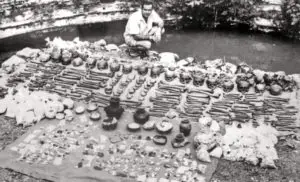 Although most of the “glamorous” artifacts have been pulled out of the main cenote at Chichén Itzá, archaeologists are still exploring the wells and underwater cave systems to try to piece together the history of the Yucatán. In the early 2000s a team led by Arturo González of the Museo del Desierto in Saltillo, Coahuila, explored several cave systems in the Mexican state of Quintana Roo in the northeastern third of the Yucatán Peninsula. The team explored a cave system called Naranjal, which extends almost 16 miles and has 8 entrances located near the Maya archaeological site of Tulum. The Naranjal system connects with another underwater cave system called Ox Bel Ha. González published his first findings in the year 2008. His 2008 report contained the data and extremely technical conclusions surrounding the discovery of two skeletons along with prehistoric hearths and the bones of extinct animals, mostly Ice Age megafauna, like mastodons. One of the skeletons was named “The Eve of Naharon” and the other “The Señora de las Palmas.” For more information about this specific project, please see Mexico Unexplained episode number 157 titled “The Señora de las Palmas and the Yucatán Cave People.” https://mexicounexplained.com/the-senora-de-las-palmas-the-yucatan-cave-people/
Although most of the “glamorous” artifacts have been pulled out of the main cenote at Chichén Itzá, archaeologists are still exploring the wells and underwater cave systems to try to piece together the history of the Yucatán. In the early 2000s a team led by Arturo González of the Museo del Desierto in Saltillo, Coahuila, explored several cave systems in the Mexican state of Quintana Roo in the northeastern third of the Yucatán Peninsula. The team explored a cave system called Naranjal, which extends almost 16 miles and has 8 entrances located near the Maya archaeological site of Tulum. The Naranjal system connects with another underwater cave system called Ox Bel Ha. González published his first findings in the year 2008. His 2008 report contained the data and extremely technical conclusions surrounding the discovery of two skeletons along with prehistoric hearths and the bones of extinct animals, mostly Ice Age megafauna, like mastodons. One of the skeletons was named “The Eve of Naharon” and the other “The Señora de las Palmas.” For more information about this specific project, please see Mexico Unexplained episode number 157 titled “The Señora de las Palmas and the Yucatán Cave People.” https://mexicounexplained.com/the-senora-de-las-palmas-the-yucatan-cave-people/
Although some cenotes are treasure troves of archaeological material, few are strictly off limits to tourists and others who wish to swim in them and explore them. In fact, dozens of tour companies offer cenote excursions including everything from swimming to deep water diving. Many cenotes are on private land and have been developed accordingly or have had their contents secretly taken away. With so many cenotes yet to be explored it is unknown what rich finds await the professional researcher or the casual bather simply going for a swim.
REFERENCES
Morley, Sylvanus G. The Ancient Maya. Stanford, CA: Stanford University Press, 1956. We are an Amazon affiliate. Buy the book on Amazon here: https://amzn.to/2VnT71O
Wikipedia
